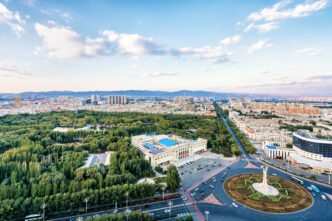Executive Summary
The Story So Far
Why This Matters
Who Thinks What?
China’s ruling Communist Party’s elite Central Committee is holding a critical closed-door plenum from Monday to Thursday, October 20-23, to deliberate on the country’s 15th five-year development plan, covering 2026-2030. This strategic blueprint is set to outline China’s economic and social development goals, guiding national policy, investment, and reform for the coming half-decade.
Understanding the Plenum
This gathering marks the fourth plenum since the 2022 Party Congress. Traditionally, the fifth plenum addresses five-year plans, but a nine-month delay in the third plenum, which was held in July 2024, has shifted this crucial discussion to the current meeting.
Plenums are characterized by strict secrecy; attendees are confined to the venue, and little information is released until the meeting concludes. A brief report outlining general agreements will be published upon its close, followed by more detailed information, likely without specific targets or costs, later in October. Full details are typically unveiled in March, coinciding with parliamentary approval.
The Significance of Five-Year Plans
The five-year plan functions as a comprehensive strategic document, setting objectives for economic growth, industrial modernization, technological innovation, environmental protection, national security, and social welfare. This upcoming plan will be China’s 15th since the adoption of Soviet-style quinquennial policy cycles in the 1950s.
Historically, these plans have been instrumental in China’s development. The 1980s plans were pivotal in opening markets and facilitating integration into global trade, while the 2000s and 2010s emphasized poverty alleviation and a shift towards domestic consumption. While China declared success in combating poverty, fostering durable household demand has remained a challenge.
Other Potential Discussions
Beyond the five-year plan, fourth plenums have historically addressed matters of party governance, including personnel reshuffling and disciplinary actions. Observers will closely monitor any potential changes in leadership, particularly within the military, to gain insights into Beijing’s strategic priorities and internal dynamics.
Implications and Outlook
The 15th five-year plan will be scrutinized for its approach to rebalancing China’s economy. While many observers anticipate a strong emphasis on boosting domestic consumption, analysts suggest the ongoing trade disputes with the United States are likely to keep policymakers focused on industrial upgrading and technological breakthroughs.
This focus implies that resources will largely continue to flow towards factories and strategic investments rather than directly to consumers. Such a strategy could further solidify China’s leadership in industries like electric vehicles and green energy, while also fostering development in sectors where it currently lags, such as semiconductors and aircraft.
However, this approach also carries potential risks, including persistent deflationary pressures, accumulating debt, and continued international tensions due to China’s disproportionate contribution to global supply relative to its domestic demand. The plenum takes place shortly before an APEC summit in South Korea, where President Xi Jinping and President Donald Trump are expected to meet, and follows recent tightened export controls on rare earths, which prompted a threat of triple-digit tariffs from Trump.
Analysts note that while five-year plans are not typically swayed by short-term diplomatic shifts, Beijing consistently frames its policies on the bedrock principle of protecting national interests amidst escalating great power rivalry.
Ultimately, the decisions made during this plenum will provide critical insights into China’s strategic direction for the latter half of the decade, balancing internal development goals with the complexities of its global geopolitical and economic standing.








